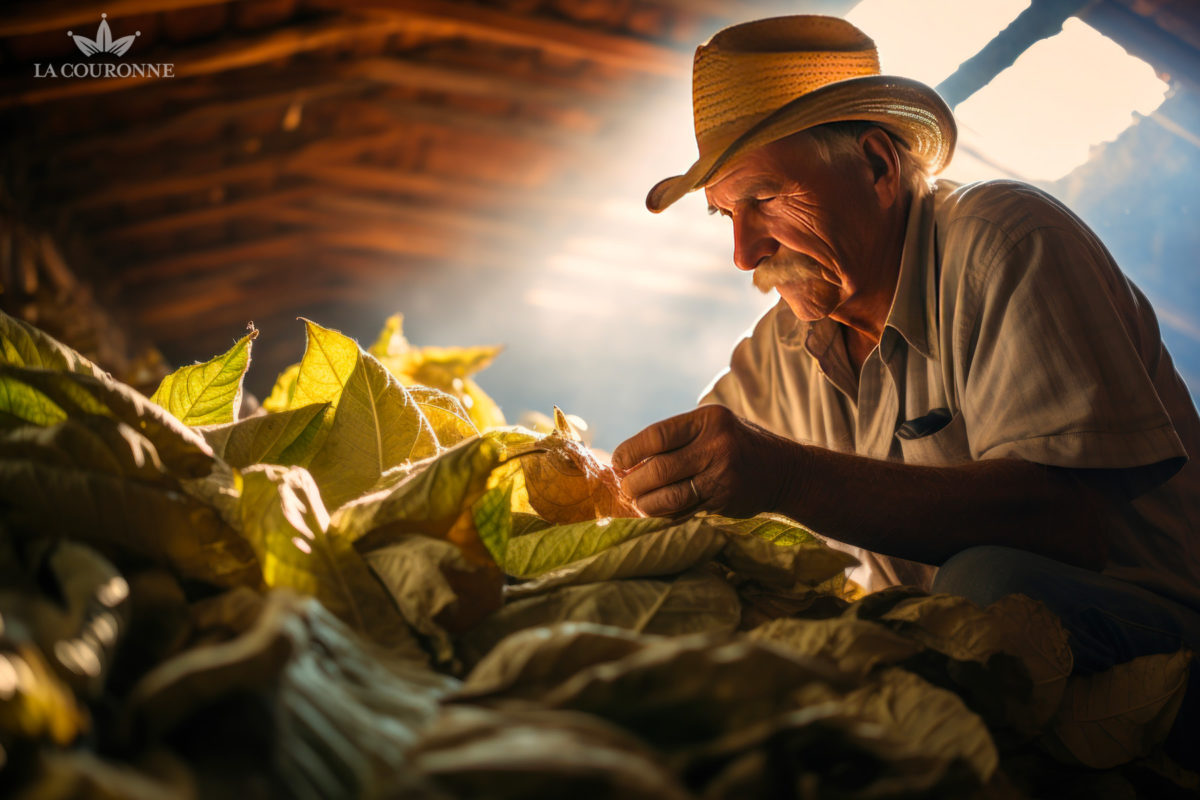The cigar academy
The secrets of master cigar blenders
The creation of a cigar involves many stages, from the cultivation of the plants to the blending of the different tobaccos. While the tobacco processing stages generally meet the same requirements as those found in most premium cigar manufacturers, the blending process is a singular stage through which a brand's identity is transmitted to us. It is this creative process that truly differentiates cigar makers from one another, and allows us to enjoy unique and varied flavor profiles. There are as many "blending philosophies" as there are master blenders.
Tobacco selection
In an interview with Tobacco Business magazine, Manuel Inoa, La Aurora's master blender, explains that "the creation of a good cigar begins with the selection of the best tobaccos". So, before even talking about blending, the cigar creation process begins in the tobacco growing fields.
From seed germination to leaf harvesting, manufacturers scrupulously monitor every stage of plant development. They check regularly with growers to learn every detail that can affect the final quality of the leaves. Bad weather or excessive heat, for example, can alter tobacco aromas from one year to the next. Manufacturers must therefore constantly adapt to the weather and drain or irrigate the soil according to circumstances.
In order to more easily control the evolution of the plants and efficiently monitor each stage of cigar production, many cigar manufacturers integrate the entire production process within their company. This strategy is called "vertical integration". It allows them to develop a better knowledge of the soil, and to directly control irrigation and fertilizers used in the crops. This is particularly useful when a manufacturer wishes to maintain an established mix. This production system also makes it possible to effectively control the pollination of plants to prevent them from reproducing and forming seeds that could create new varieties.
Define a cigar profile
Before starting to create blends, cigar makers need to determine certain technical parameters essential to the realization of their project. While this process may vary from one manufacturer to another, it generally involves defining a cigar's strength, its flavors as well as the quantity of cigars to be produced.
Defining a cigar's strength and flavor profile will make it easier to select the types of tobacco that will make up a cigar. Certain terroirs, such as Nicaragua and the Honduras for example, are renowned for their full-bodied tobaccos with spicy flavors, while a terroir like the Dominican Republic offers less strong tobaccos, but with great aromatic complexity. A manufacturer who wants to create a full-bodied, yet complex cigar can opt for a blend of leaves from these different terroirs.
In the same way, defining the strength of a cigar will enable us to know which type of leaves to use in a mixture, and in what proportion. Each leaf stage of a plant has specific characteristics. The volado, for example, ensures that a cigar burns well, and therefore has no impact on its aromatic profile. The seco is responsible for a cigar's aromatic profile, while the ligero is used to add strength. Depending on the desired strength and personality of the cigar, different leaves will be used in different proportions.
Creating a cigar also involves estimating the desired production quantity. A limited edition will not require the same quantity of tobacco as a mass production. It is therefore important to know how many cigars are going to be produced, to ensure that the tobacco stocks needed to manufacture them will be sufficient to meet production targets.
Assembly testing
According to Nick Perdomo, founder of the Tabacalera Perdomoblending is "as much an art as a science". Manufacturers use their knowledge of tobacco to create new, harmonious and sophisticated combinations. This creative process naturally involves making mistakes. It also requires knowledge of the notes and aromas of different tobaccos, so as to know how they will interact with each other. To achieve this, manufacturers test each tobacco individually. At Perdomo, this step is always accompanied by a café au lait, a drink that naturally cleanses the palate.
To create balanced blends, Master Blenders take into account five essential characteristics: flavor, aroma, combustion, strength and body. The aim is to find blends capable of stimulating the smoker's palate and create an unforgettable tasting experience. For Matt Booth, founder of Room101 and Creative Director of General Cigar, creating a blend must be intuitive. It's a matter of "choosing tobaccos capable of forming a solid friendship over time". As with humans, some tobaccos are made to get along, while others have nothing to do with each other. For him, it's all about finding unions that are compatible by nature. The tobaccos must flatter each other without any of them overpowering the others.
Other master blenders compare the art of blending to the art of cooking. Like food, some tobaccos are naturally salty, peppery, sweet, earthy or herbaceous. It's all about finding harmonious, multidimensional combinations, like cooking recipes, capable of surprising and flattering the smoker's palate.
The art of assembly: a story of sharing
Before being tobacco specialists, master blenders are enthusiasts. It's this passion for tobacco, and cigars in particular, that drives them to create new blends all the time. This art in its own right is also the fruit of collaboration and constant exchange between all those involved in producing and processing the world's finest tobaccos.
Thanks to their love of tobacco and their devotion, they amaze us every day with new flavor profiles. As the saying goes Rafael Nodalthe master blender fromAging Room and Capitol: "In the end, what's our job? We pick the leaves, we play with the leaves, we look for certain flavors and expressions. But most of all, what we create are moments: moments for the connoisseur to enjoy.

